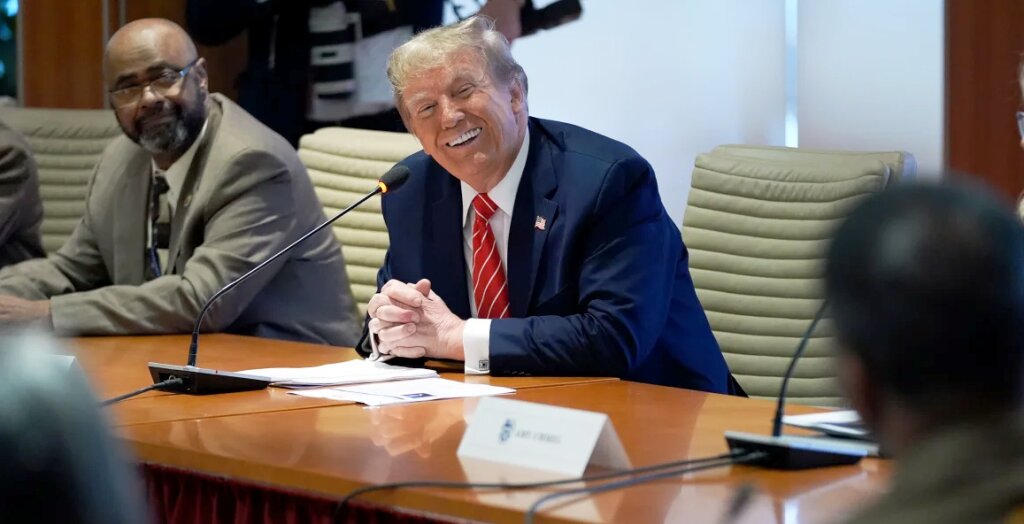
Biden is visiting the United Auto Workers in Michigan on Thursday. He wants to keep their support, because they usually vote for Democrats. Trump is meeting the Teamsters in Washington on Wednesday. He wants to win them over, because they are becoming more Republican.
The polls show that Trump is doing well with union voters. In six states that Biden barely won in 2020, he is now tied with Trump among union voters. In 2020, he had an 8-point lead over Trump in those states.
Union voters are very important in Michigan, Nevada and Pennsylvania. Many workers in these states are in unions or have union contracts. (More workers have union contracts than are union members.)
Some people may be surprised that union voters are not loyal to Democrats. They should not be.
Biden did well with union voters in 2020, but not as well as some past Democrats. Clinton did better in 1992, when he also won the popular vote. Truman did much better in 1948, when he also won a close election. He ran as a populist against Dewey, who was seen as a rich Republican.
Now, many Republicans, like Trump, also act like populists. They appeal to workers who did not go to college. These workers are more likely to vote for Republicans than before.
Trump got more votes from union workers who did not go to college in 2020. Biden got more votes from union workers who did go to college.
This may look like a split between union leaders and union members, but it may not be. Union workers are not just factory workers. They are also teachers, librarians and other professionals. More of them work for the government than for private companies.
Union workers are different from before, and so is their role in politics. When Truman beat Dewey, union workers were a big part of the workforce. Now, they are a smaller part.
Some people may think that union workers have less power. But they still matter a lot in elections.
A shift in the appearance of union workers has resulted in a corresponding change in their standing among voters. Up until the time that Truman defeated Dewey, union workers made up approximately thirty percent of wage and salary workers. As of right now, they constitute around 10% of the total.
It is possible that you will receive the impression that unions have lost their influence due to the decreasing share of union members in the broader workforce. It’s possible that this is accurate, but it’s important to keep in mind that elections are less far apart than they’ve ever been in our whole lives.
There has not been a single presidential election that has been decided by a margin of more than 10 percent of the popular vote in the past thirty-six years. In the history of American politics, this is the longest run ever. Within a large voting bloc, even a slight adjustment can have a significant impact.
To add insult to injury, union members routinely take the lead in organizing voter registration drives in important swing states. Motivating them can have an effect that extends beyond the amount of votes that union members cast.
The fact that the majority of Americans have favorable sentiments of labor unions is another piece of evidence. In the United States, the percentage of people who support labor unions is approximately two-thirds, which is among the highest percentages observed since 1967. A mere fifteen years ago, only 48 percent of Americans were in favor of unions.
To phrase it another way, it is beneficial to be viewed as being pro-labor union, even among voters who are not members of the union.
Given these circumstances, and the fact that Biden and Trump appear to be headed for a rematch in the autumn, you should not anticipate that they will stop recruiting union votes until the day of the election.





